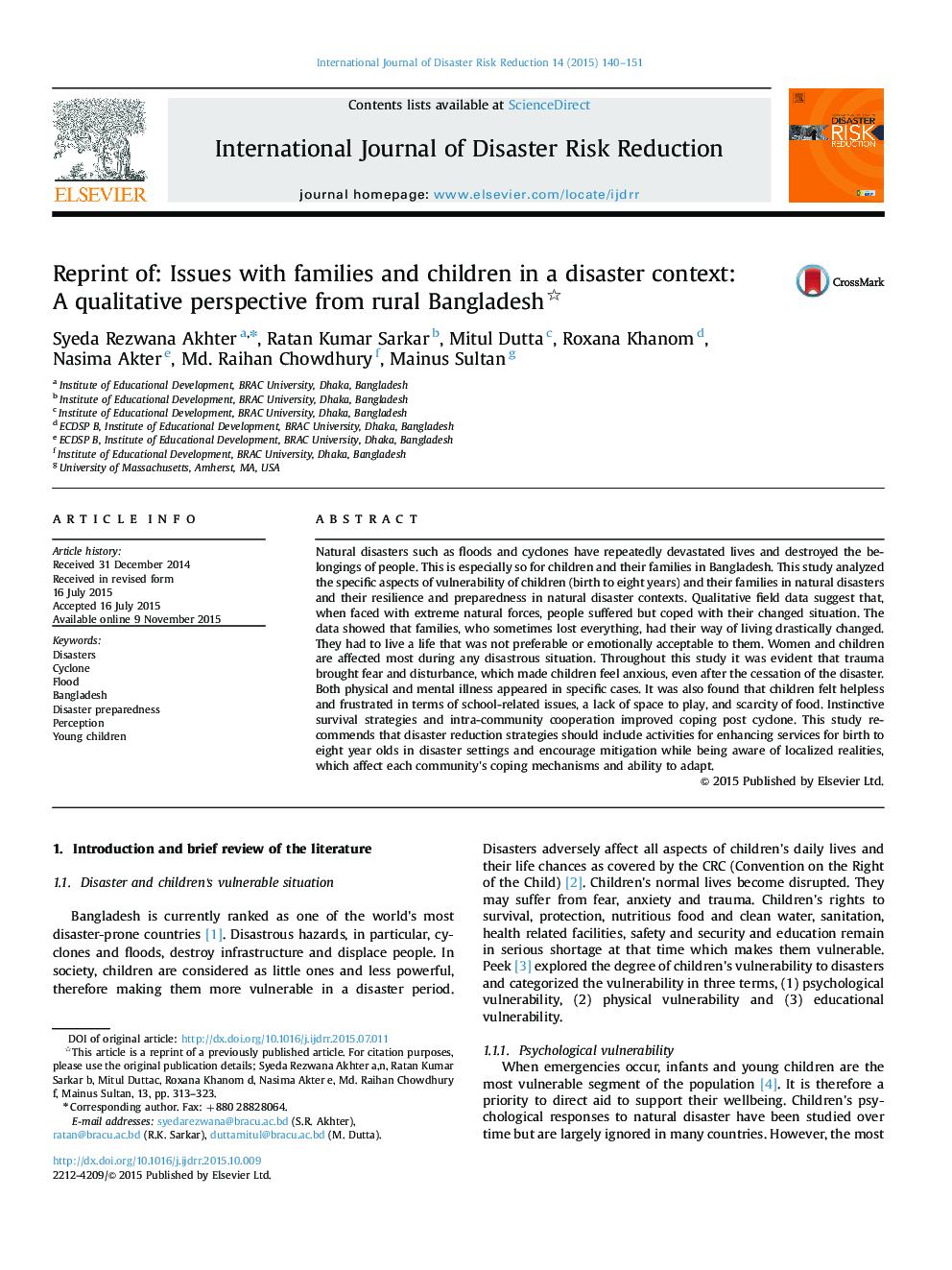| Article ID | Journal | Published Year | Pages | File Type |
|---|---|---|---|---|
| 1055218 | International Journal of Disaster Risk Reduction | 2015 | 12 Pages |
Natural disasters such as floods and cyclones have repeatedly devastated lives and destroyed the belongings of people. This is especially so for children and their families in Bangladesh. This study analyzed the specific aspects of vulnerability of children (birth to eight years) and their families in natural disasters and their resilience and preparedness in natural disaster contexts. Qualitative field data suggest that, when faced with extreme natural forces, people suffered but coped with their changed situation. The data showed that families, who sometimes lost everything, had their way of living drastically changed. They had to live a life that was not preferable or emotionally acceptable to them. Women and children are affected most during any disastrous situation. Throughout this study it was evident that trauma brought fear and disturbance, which made children feel anxious, even after the cessation of the disaster. Both physical and mental illness appeared in specific cases. It was also found that children felt helpless and frustrated in terms of school-related issues, a lack of space to play, and scarcity of food. Instinctive survival strategies and intra-community cooperation improved coping post cyclone. This study recommends that disaster reduction strategies should include activities for enhancing services for birth to eight year olds in disaster settings and encourage mitigation while being aware of localized realities, which affect each community's coping mechanisms and ability to adapt.
